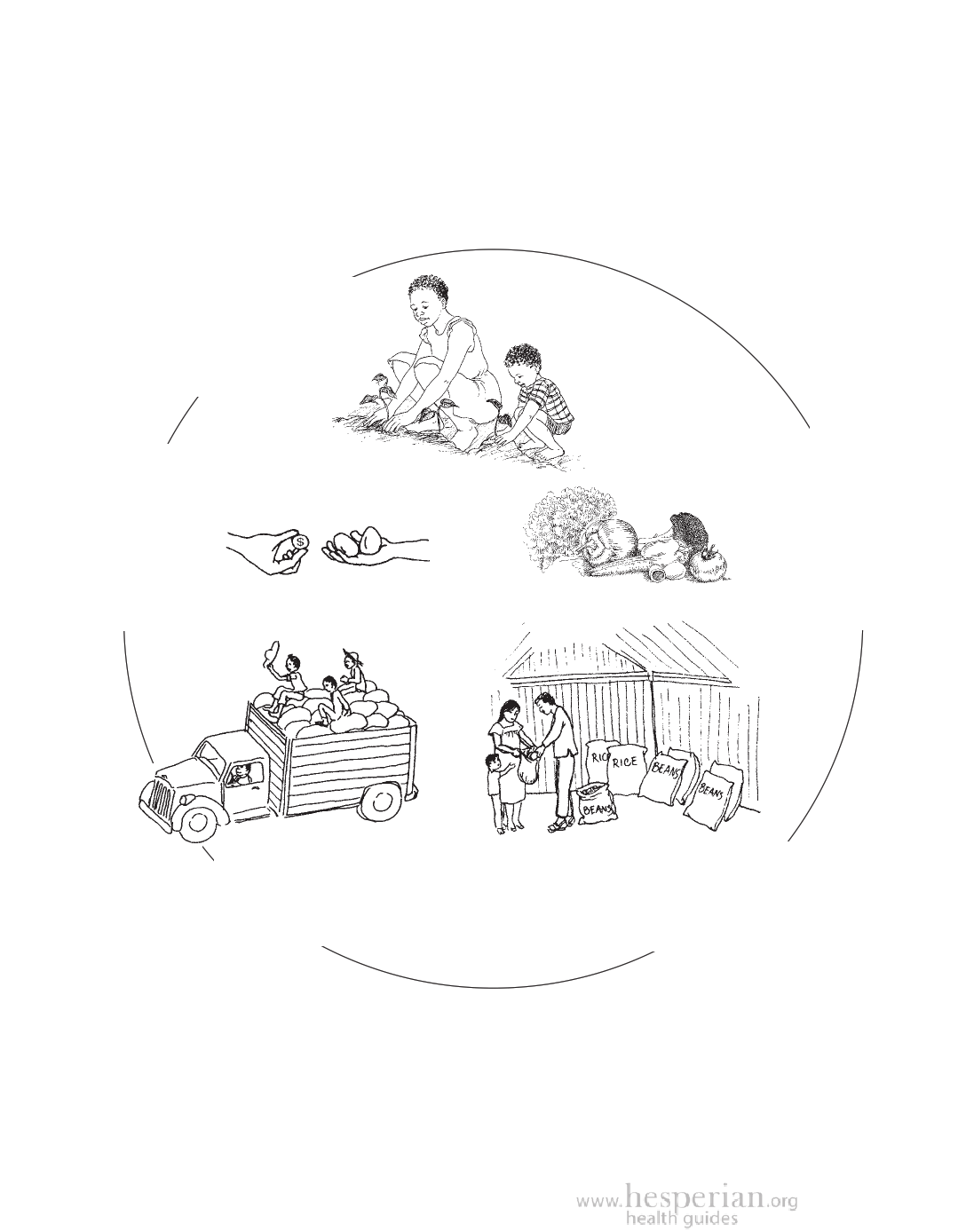
220 Community Food Security
What Is Community Food Security?
To understand what problems a community has in getting enough healthy food,
look at all the different things that together add up to food security.
Food production. Access to land,
seeds, and water; knowledge
of how to farm; and finding the
right balance between food
grown to sell and to eat.
Money, savings, and credit.
People need money to buy
at least some
of their food.
Food producers
need credit for
seed and other
needs, especially
in years when crops fail.
Good health. People need to be healthy
to absorb the nutrients from food.
When people are weak from illnesses
caused by unsafe water, or
from long-term illnesses
like malaria or HIV,
they are less able
to produce food for
themselves and their
communities.
Food transportation and
distribution. A way to get
foods to market, and people
to markets to buy food.
Food storage. Communities often need to store
food for 3 or 4 months so it will last though a dry
or rainy season, or long times of cold or drought.
Food storage must also protect from pests. If
rats eat half of your food, you go hungry.
Food contaminated by pesticides, toxic chemicals, germs, or genetically
engineered (GE) foods (see Chapter 13), may be available, but will not provide a
safe, healthy diet. Also, without a safe cooking space and enough time and fuel
to prepare food, people often eat too many processed foods, which can lead to
health problems.
A Community Guide to Environmental Health 2012